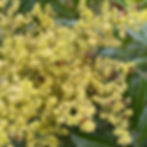
About
Grower Greg
Greg has been growing plants since he was very young. Early on he mainly helped grow vegetables in the family garden. When he purchased his first house he started growing native species and landscaping the property in Central Wisconsin. With the recent acquisition of the three onsite beehives, he has returned to starting native plant species to serve as a nectar and pollen source for pollinators.

A Childhood of Gardening
Few pictures remain from a childhood of gardening but fall was always accompanied by digging and potting the tomatoes to extend the season, even if by just a month.
By the time we were ten, all of us brothers had our own "garden" in the field next door where we'd grow our own bean, peas and carrots. More than anything, we played in the dirt.
By the time I was in my teens I started growing shrubs and trees in the garden as well.

Some Things Never Change
After getting sick of mowing a half acre (I now have over 2 acres), I decided an outdoor living area was needed to cut down on mowing time.
We decided to use native plants in the area for a more natural look and more pollinator-friendly garden.
Starting hundreds of plants in the basement of a house is definitely a challenge to overcome. Seedlings need lots of light and changes in temperature to grow properly. Lots of learning occurred but the project was (mostly) successful!




What's that Buzzing Sound?!
On June 4, 2021, we got our first beehive. As summer passed, we noticed few plants were in flower during July and August. Those that did were heavily used by the bees.
That fall we decided to grow more summer flowering native species for the pollinators to work in summer.
Why natives and why all pollinators?
While honey bees cannot obtain nectar and pollen from all flowers, providing a variety of flowers for all pollinators allows the bees better access to those plants that they can use.
Species are nature's preference. I have avoided plant cultivars (think plants with pretty flowers you see for sale in most places) and nativars (plants bred to some degree more for appearance to humans). If cultivars and nativars were indeed pollinators first choice, they would be all we find in nature. To get more and prettier flowers, the plants always sacrifice something. That might be as simple as the amount of nectar or pollen... or in many cases sterility.




A New Farm Is Born
Pura Vida Farm was started as a way to give back and to help others help the the pollinators. Pura Vida Farm also support the Friends of Seven Islands State Birding Park. A minimum of 40% of all proceeds will be donated to the Friends of Seven Islands State Birding Park. See how you can become involved with the Friends of Seven Islands State Birding Park here.
The focus on plants for sale here is the pollinators. You will find plants with the following characteristics:
-
Minimally Aggressive - most will not require a lot of work to keep them contained.
-
Showy Flowers - we want you to enjoy the flowers as much as we want the pollinators to enjoy them
-
Long-Lived - you won't find many annuals here! Perennials invest more time in survival, so they produce fewer flowers over a shorter period but they make themselves much more valuable to pollinators by investing their survival in producing more pollen and nectar.
-
Variable Flowering Times - Since a single perennial doesn't typically flower spring through fall, there will be a variety of options provided to ensure something can be planted to flower most of the year.
You will notice the majority of plants were selected to flower in the hottest, driest time of the year when pollen and nectar are oftentimes least available (typically called the "dearth" by beekeepers).




